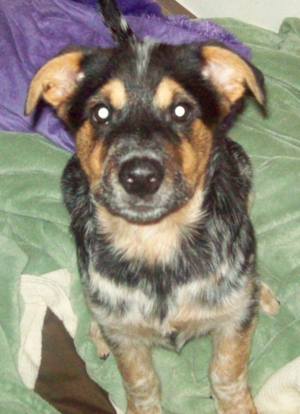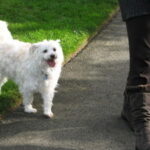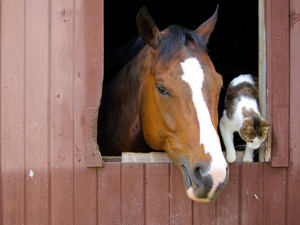It’s important to understand instinct when training a dog. We are the proud owners of a 7-month old blue heeler puppy. Calling him a puppy is a bit of a misnomer, in that he weighs about 60 solid-muscle pounds, but he still acts like he is a pup. This means he wants to be cuddled, and to sit on our laps, and to lay on top of us, like he is still a small puppy. Most dogs, especially larger dogs like the blue heelers, do not have any real concept of their size.
That is the first thing to understand when training a blue heeler puppy. He won’t understand that even though he’s still excited and hyper and happy to see you, he is almost half your weight and probably stronger than you are!
Blue Heeler Puppy Crate Training
When I first started training with our blue heeler puppy, I was adamantly against my husband’s suggestion of getting a crate to put the puppy in. To me, that seemed like too severe a punishment for a little pup, almost like prison. We only had our tiny pup for a few weeks before I realized something about blue heelers. They need small spaces. Much like an instinct of a wild dog, canines like the blue heeler like to live in the safety of caves, and the crate can be very comforting for a blue heeler puppy.
Blue Heeler Chewing Training
As with all puppies, blue heelers are going to chew on everything, particularly when they are teething (which seems to last their entire lifetime). If you don’t want your house chewed up, it’s important to buy chew toys that are allowed to be chewed on, and teach the blue heeler puppy when they are chewing on furniture or other items (like power cords!) you can redirect the blue heeler to his toys to chew on.
Blue Heeler Potty Training
Potty training is always one of the toughest things to teach a puppy. Blue heelers are naturally people pleasing dogs, so they are going to respond well to positive reinforcement. Buying the scented puppy pads and putting them close to the exit door to your home when the blue heeler puppy is being potty trained can help him understand that you want him to ask to go outside, but also will help teach him not to potty on carpet.
Every time your blue heeler puppy eats or drinks, within 10-15 minutes, take your blue heeler puppy outside to the yard. Wait with the blue heeler puppy for at least 10 minutes. The puppy won’t understand at first that you want him to potty, but eventually, if you’re patient, he will potty just by being outside enough. When the blue heeler puppy does potty, give him a treat and praise him and pet him and tell him he was a good boy. Be sure to use the words you want him to remember for potty training.
If the blue heeler misses and potties inside the house, stop him as soon as he starts to go and tell him “outside” and take him outside. Be sure to clean the spot well and use an odor eliminator to remove the scent so he doesn’t go back to that spot again.
Blue Heeler Sleep Training
It won’t take long for your blue heeler puppy to get used to your sleep and waking schedule, though he will require a lot more sleep than you do. It’s okay to let your blue heeler puppy nap during the day, but be sure he gets plenty of exercise during the day so he is tired and ready to sleep at night. If you want to sleep with your blue heeler puppy, be sure he can get up and down from the bed without falling and hurting himself in the middle of the night.
If you don’t sleep with your blue heeler puppy, it’s best to have a safe, enclosed place for him to sleep while you’re asleep. Once the blue heeler puppy is larger, he can sleep and be active at night while you’re sleeping, but it’s not safe to let him roam the house at night — not for him or your furniture!
A blue heeler puppy is a great pet for anyone who is used to caring for or being around medium to larger sized dogs. They are loyal pets, calm and intelligent temperament, and require an owners who is active and involved with him. Blue heelers are great for older kids and teens, but are likely too big and rambunctious for smaller children.
I love our blue heeler puppy, who is now a huge 8 month old puppy. He’s like a toddler though, and we can’t turn our backs on him for a second!






